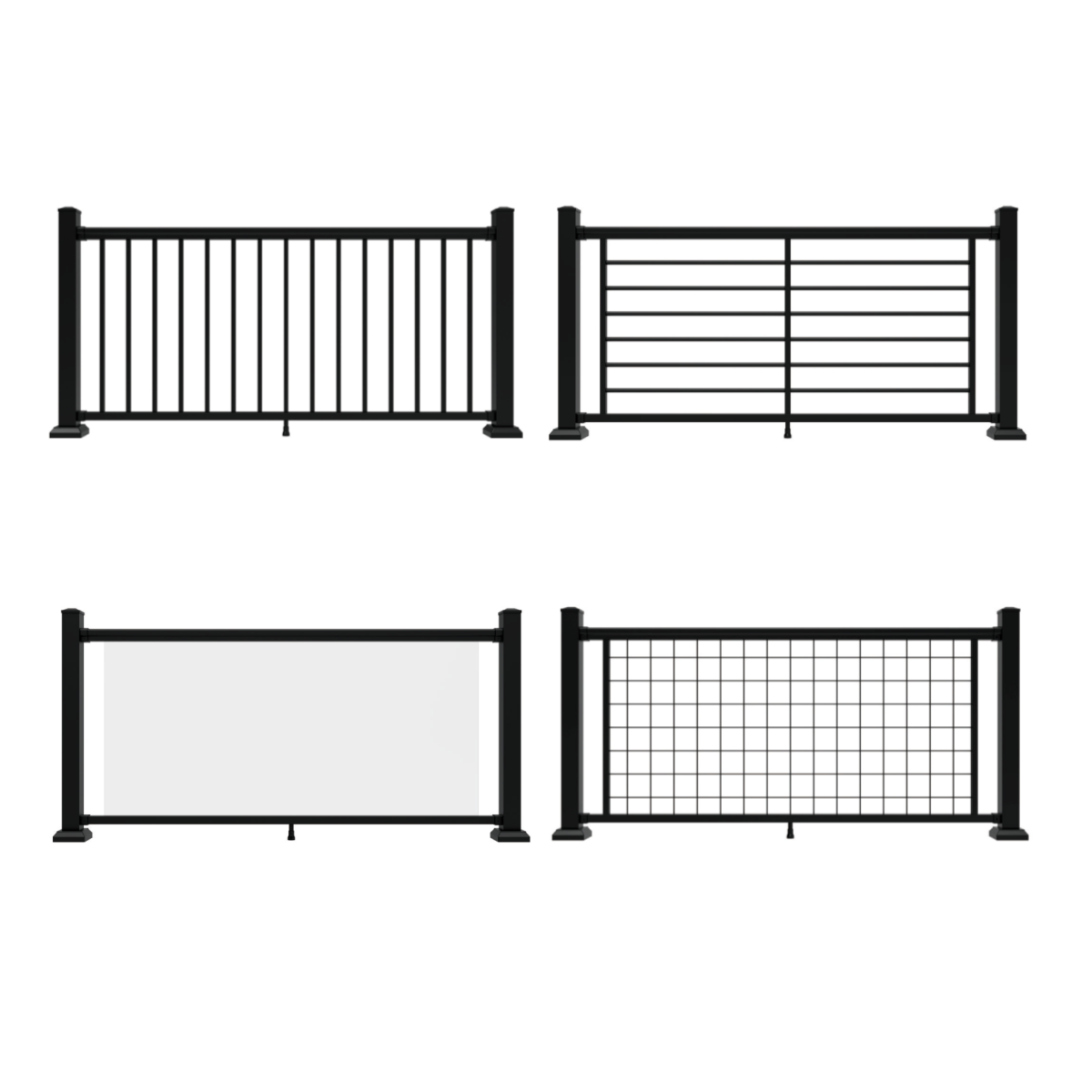Picket railings are among the traditional and widely us […]
Picket railings are among the traditional and widely used aluminum railing systems. They feature vertical bars or "pickets" spaced evenly between horizontal top and bottom rails.

Design Features: Clean lines and uniform spacing give picket railings a classic look. The vertical elements add structure and help define space without obstructing views.
Applications: Ideal for decks, balconies, and staircases, particularly in residential properties or commercial settings that prioritize safety and simplicity.
Benefits: Picket railings are low maintenance, weather-resistant, and easily customizable in height and spacing, making them a practical choice for many environments.
For those seeking a more modern and visually open railing solution, glass panel aluminum railings offer a sleek alternative. These systems integrate clear or frosted glass panels between aluminum posts and rails.
Design Features: The combination of glass and aluminum provides a minimalist and sophisticated appearance. Glass panels can be framed or frameless, depending on the desired style.
Applications: Commonly used in high-rise balconies, luxury residential developments, and commercial buildings where an unobstructed view is valued.
Benefits: Glass panel railings offer wind protection and enhanced visibility while maintaining safety standards. They are also corrosion-resistant and suitable for coastal areas.
Cable railings incorporate stainless steel cables in place of traditional pickets or panels. These cables are stretched horizontally or vertically within an aluminum frame.
Design Features: Sleek and streamlined, cable railings emphasize horizontal lines, contributing to a contemporary or industrial look.
Applications: Frequently used in modern residential architecture, rooftop terraces, and urban commercial projects.
Benefits: Cable railings provide clear sightlines and minimal visual obstruction. They are strong, durable, and well-suited for both indoor and outdoor use.
Horizontal bar railings use multiple parallel bars instead of vertical pickets, creating a linear and geometric aesthetic.
Design Features: The horizontal arrangement offers a clean, modern design that aligns well with contemporary architecture.
Applications: Popular in urban apartments, office buildings, and minimalist home designs where visual balance and uniformity are important.
Benefits: These railings maintain strength while offering a distinct look. The use of powder-coated aluminum ensures resistance to fading and corrosion over time.
For applications requiring added seclusion or wind protection, aluminum privacy railings incorporate solid panels or tightly spaced vertical slats.
Design Features: Panels can be made from aluminum sheets, composite materials, or other inserts mounted between posts.
Applications: Useful for apartment balconies, pool enclosures, and rooftop patios where privacy is a priority.
Benefits: Privacy railings offer both function and visual appeal. They help block wind and reduce noise, contributing to a more comfortable outdoor environment.
Custom railings are designed to reflect unique architectural themes or personal preferences. These may include intricate patterns, custom laser-cut panels, or themed elements.
Design Features: A wide range of decorative designs can be integrated into the railing system, using different finishes, colors, and shapes.
Applications: Found in upscale residences, hotels, public buildings, and cultural institutions aiming to incorporate artistic elements into functional structures.
Benefits: Custom railings allow full expression of design preferences while maintaining the durability and low maintenance benefits of aluminum.
In certain designs, a minimalist railing system is achieved by using only a top rail with glass or acrylic panels beneath, supported with concealed brackets.
Design Features: This type provides a near-invisible look, offering safety without obstructing views or architectural flow.
Applications: good for scenic decks, observation platforms, or buildings with an open-concept style.
Benefits: The frameless effect enhances the feeling of openness. With fewer visible elements, the space feels more expansive and contemporary.